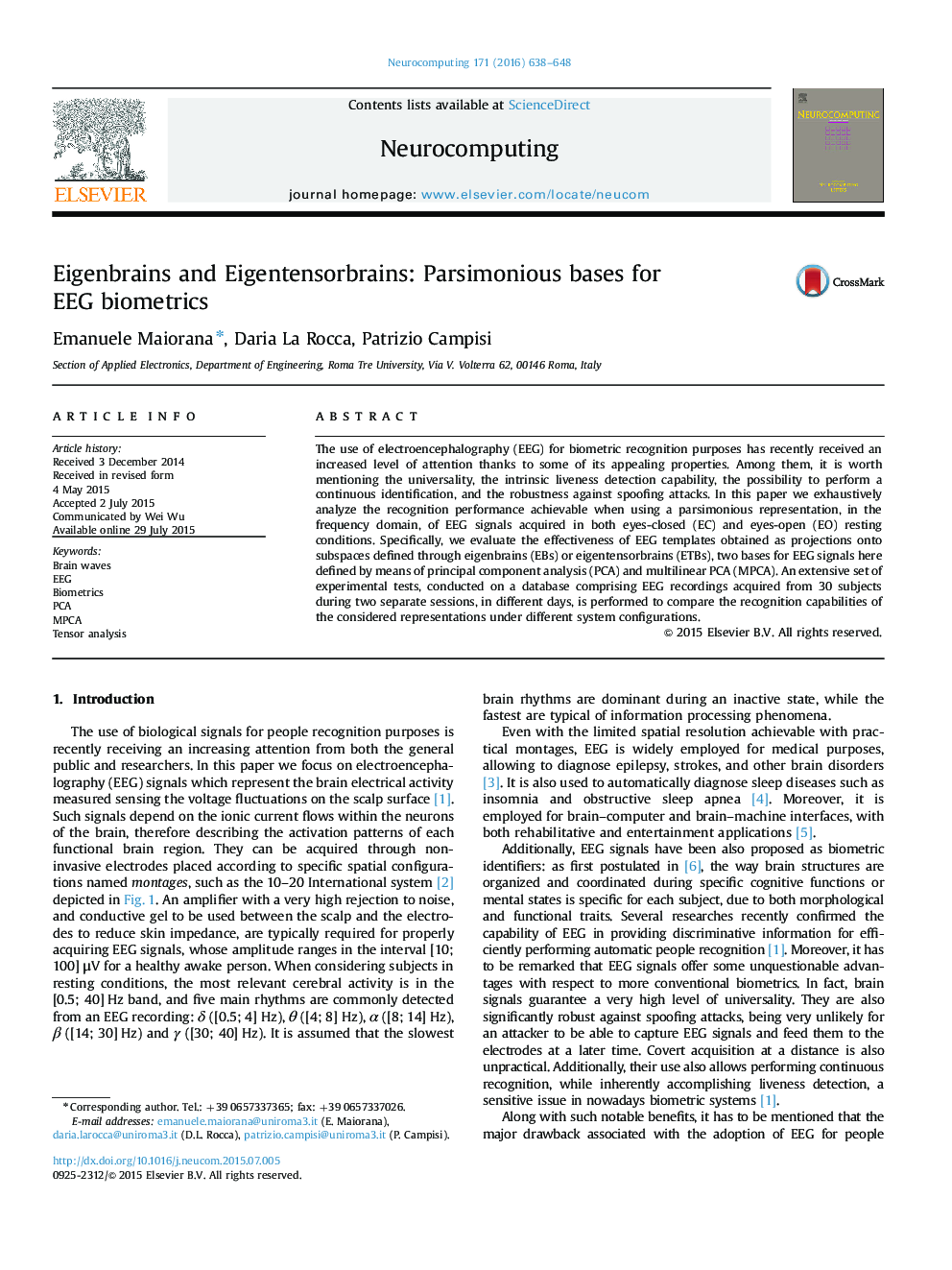| کد مقاله | کد نشریه | سال انتشار | مقاله انگلیسی | نسخه تمام متن |
|---|---|---|---|---|
| 407441 | 678140 | 2016 | 11 صفحه PDF | دانلود رایگان |

• Two novel parsimonious EEG representations proposed for biometric recognition.
• Performance evaluated on EEG data taken in two distinct sessions from 30 subjects.
• Analysis of the discriminability of distinct EEG sub-bands, with several classifiers.
• LDA improves the performance if applied to either ETB or EB representations.
• For recognition, ETB projections better than EB, EC resting conditions better than EO.
The use of electroencephalography (EEG) for biometric recognition purposes has recently received an increased level of attention thanks to some of its appealing properties. Among them, it is worth mentioning the universality, the intrinsic liveness detection capability, the possibility to perform a continuous identification, and the robustness against spoofing attacks. In this paper we exhaustively analyze the recognition performance achievable when using a parsimonious representation, in the frequency domain, of EEG signals acquired in both eyes-closed (EC) and eyes-open (EO) resting conditions. Specifically, we evaluate the effectiveness of EEG templates obtained as projections onto subspaces defined through eigenbrains (EBs) or eigentensorbrains (ETBs), two bases for EEG signals here defined by means of principal component analysis (PCA) and multilinear PCA (MPCA). An extensive set of experimental tests, conducted on a database comprising EEG recordings acquired from 30 subjects during two separate sessions, in different days, is performed to compare the recognition capabilities of the considered representations under different system configurations.
Journal: Neurocomputing - Volume 171, 1 January 2016, Pages 638–648